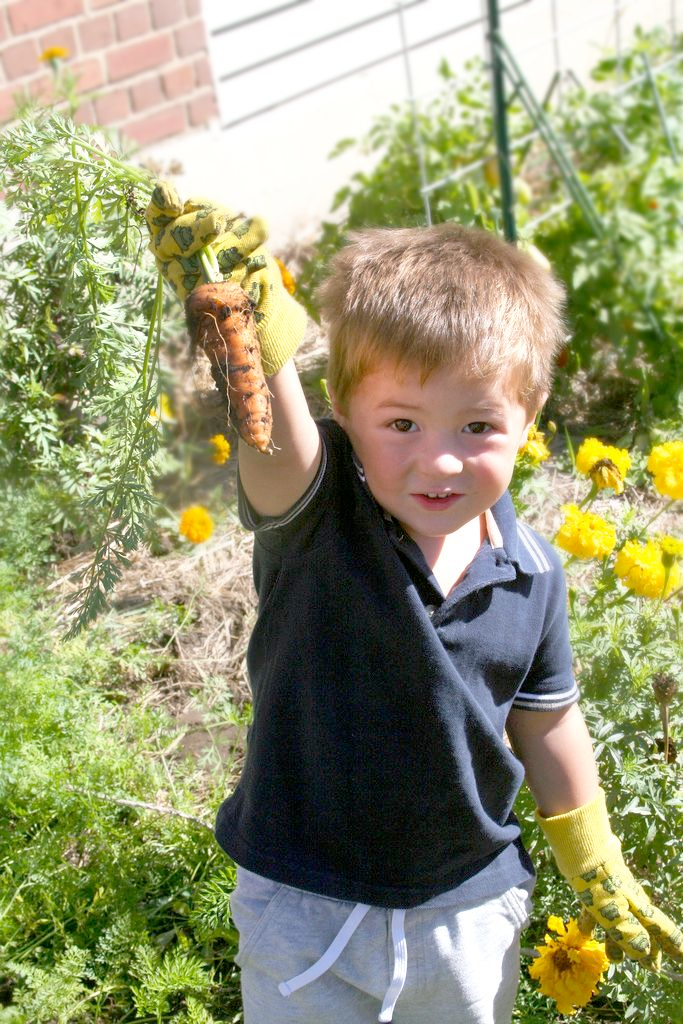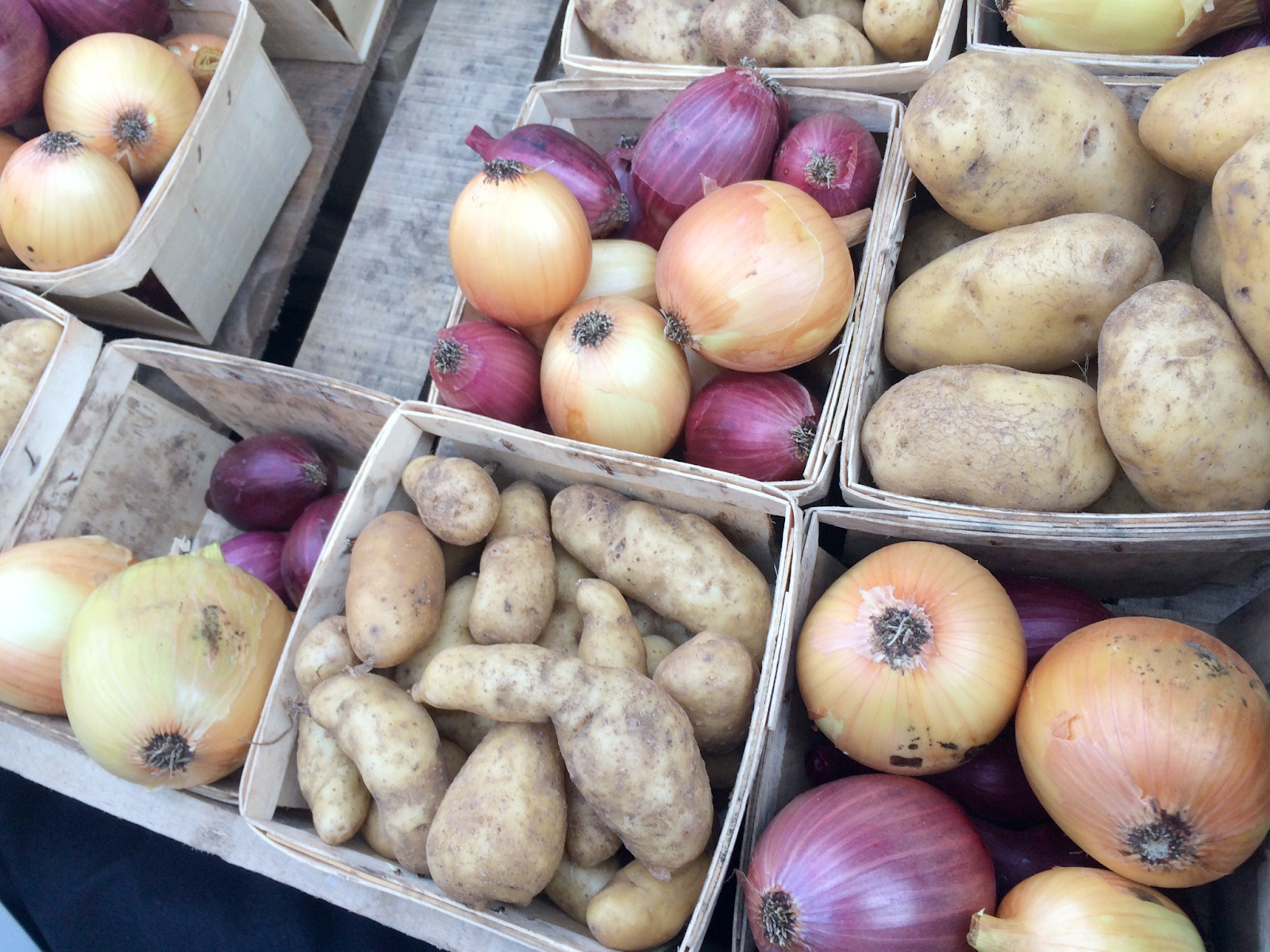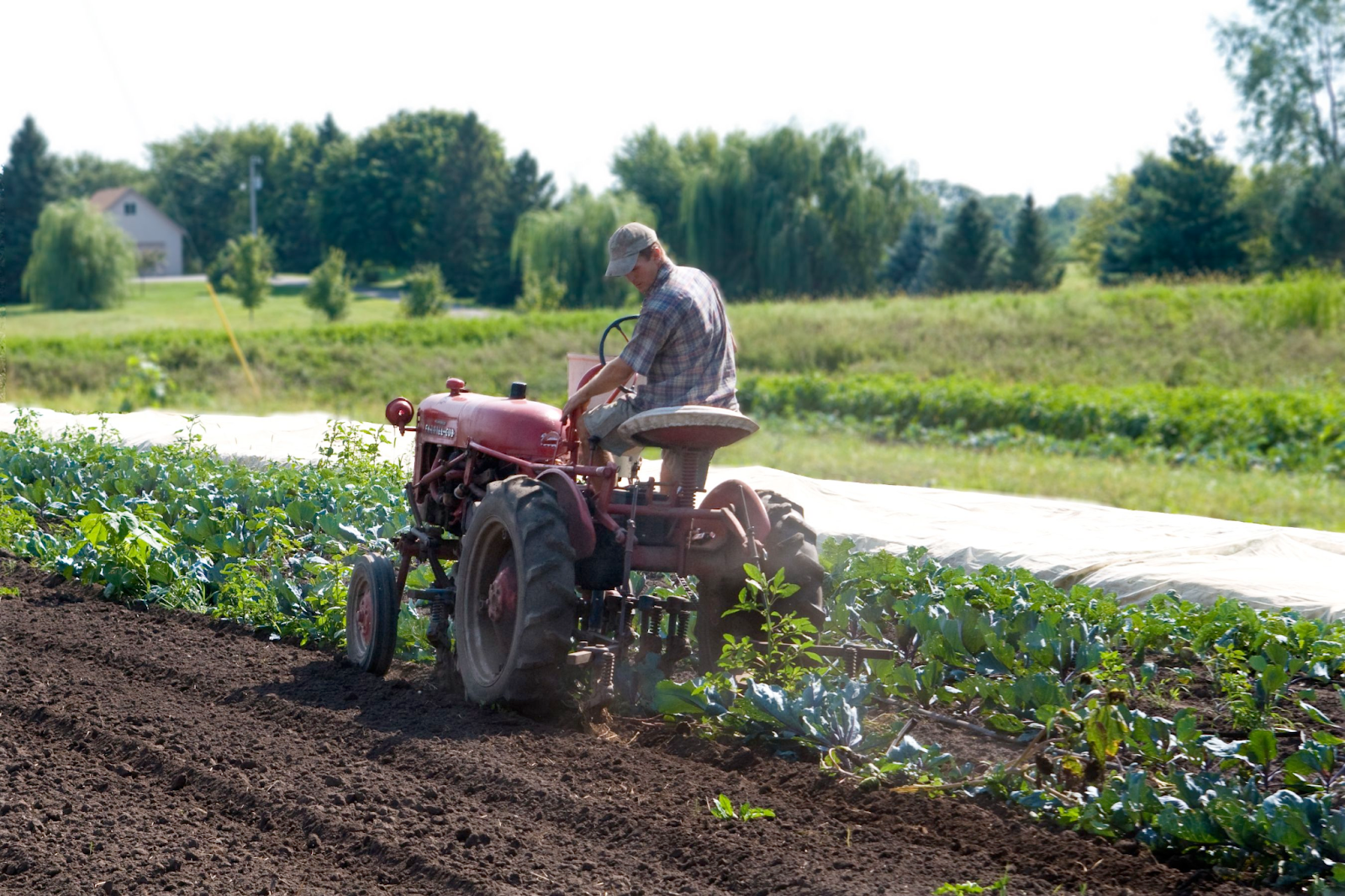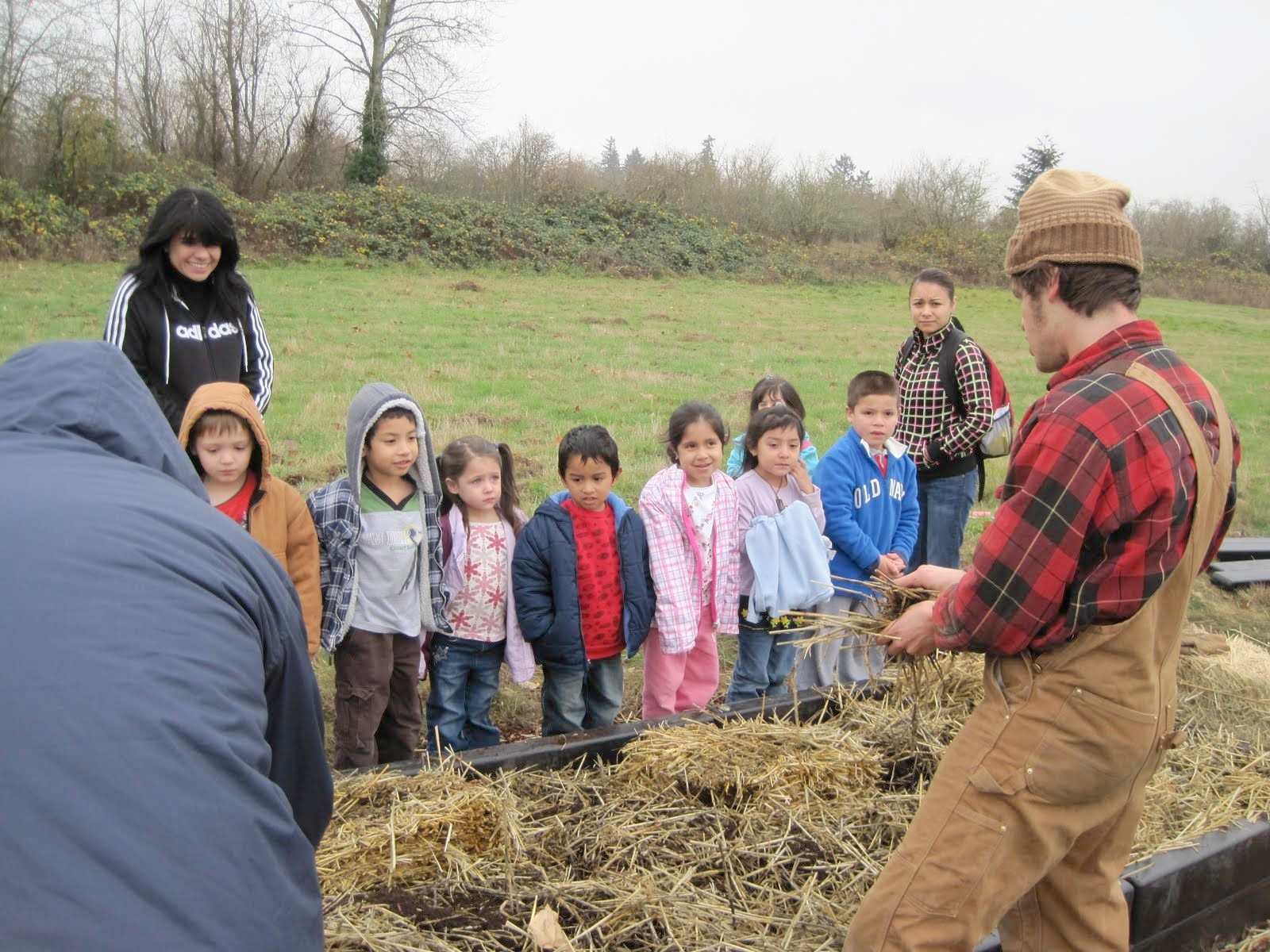By Hawthorn McCracken, NFSN Farm to ECE Program Associate
One of the most rewarding aspects of farm to early care and education (ECE) is the interconnectedness it fosters within communities. From the joy of sharing a family recipe to the broad regional networks meant to support local food infrastructure, farm to ECE programming is loaded with opportunities for making human connection and building avenues for mutual support.
Connecting with local farmers has uncountable benefits for your ECE program. Beyond the kitchen, nurturing a relationship with a farmer can provide opportunities for field trips, classroom visits, or community events, which allow your students to experience agriculture hands-on and develop a true sense of place in their food system. And now, when federal policy threatens to remove support from both small farmers and ECE professionals, these connections can be a vital economic lifeline.

Many caregivers and ECE providers are excited about the prospect of purchasing local foods, but often struggle knowing where to start. While there are a good number of resources available on local procurement, every ECE program, farm, and food system are different. Farmers and ECE professionals are also very busy, hard-working people, and building these connections may require more flexible communication. If you’re interested in direct purchasing from a local farmer, read on for some tips on building farmer connections.
The first step is finding your ‘why’.
Knowing the motivations and goals your site wants to accomplish helps shape your purchasing decisions, and guides your search for a farmer that fits all of your needs. Your ideal meal service may include organic or sustainable farming practices, or culturally relevant foods. You may want to focus on supporting historically underserved farmers, or buying from farms of a certain size. All of these considerations will shape your search for a procurement partner. See our Values-Aligned Purchasing resources for more information.
Next, you’ll need to identify which purchasing method best fits your needs.
ECE programs range from small, in-home care providers with fewer than eight children, all the way to multiple large group sites managed by one organization. Some may have access to a full kitchen, while others receive food service from an outside caterer. No matter what scale you work at, there are options for including local foods in your meal pattern.
> Community Supported Agriculture (CSA):
Best for: smaller childcare centers, in-home care, or programs looking to start small
Some farmers offer weekly or monthly subscription boxes, often called CSA (Community Supported Agriculture) shares. CSA boxes are an excellent option for smaller childcare centers, in-home care, or programs who are looking to start small by using fresh produce in taste tests and classroom activities. These may be delivered right to your site, or picked up at a designated location in the area. Each farm business is unique – it never hurts to ask how you can help promote their products in exchange for a reduced cost. For example, some ECE programs have collaborated with local farmers to allow families and community members to pick up their CSA boxes on site, and receive their share at a discount.

> Finding local food at grocery stores and your food service provider:
For those who rely on grocery stores for their food service needs, there are still options for supporting local farmers. Many states have local labeling programs, such as the Colorado Proud, Minnesota Grown, or Virginia’s Best initiatives. You can easily find locally-produced items at your usual grocery store by looking for these tags. If your grocer doesn’t currently use them, that’s a great opportunity to encourage them to do so!
Similarly, food service providers have begun including local tags in their databases. If your provider doesn’t yet have that option, you can contact them and let them know you’re interested in supporting your region’s farmers. If you participate in CACFP (also known as the Food Program) you can learn more about including geographic preference in your purchases here.
> Farmers markets:
If you want to get closer to the source, farmers markets can be a great opportunity to purchase local produce and to build stronger relationships with farmers and small businesses. Many ECE professionals use farmers markets for both procurement and for class field trips. Quite a few markets have begun including children’s activities, including sticker passports or scavenger hunts, to encourage little ones to explore the full extent of the market’s offerings.
This guide from Healthy Harvest of North Iowa provides some activities and field trip ideas for incorporating the farmers market in your curriculum.
And, for those purchasing through CACFP, here’s a handy template for documenting your farmer’s market orders.
If you have any questions about best practices for using direct-purchased produce in your meal pattern, reach out to your CACFP sponsor, or refer to the NCA’s resource library.
> Ordering wholesale from farmers:
There are also farmers who grow at mid-to-large scale who are able to fulfill wholesale orders. The best way to know what volume a producer is comfortable with is to contact them. When ordering wholesale, it may be necessary to speak with a producer before their growing season begins so they’re able to have enough seed, feed, and materials to fill your order. In most regions of the US, farmers plan their next season in winter. Reaching out around November-January is a good bet, but if you’re open to a longer wait, you can also start discussing next year’s crops in the summer and fall.
> Food hubs:
Best for: Mid- to large-sized orders or for sites that want to try products from multiple farmers
Food hubs are another wonderful way to support local producers. In many regions, these businesses have taken on the work of aggregating, marketing, and distributing farm products from many growers. Purchasing from a food hub is a great option for those looking for medium to large size orders, or for sites who want to try products from multiple farmers. Food hubs make purchasing easy by combining all of your local food needs into one order, and they often support local agriculture in other ways, such as through technical assistance and business development programs. Check out this directory of food hubs to see if there’s one near you. This list is not exhaustive, so ask around at your local food co-op or business center to see if there is a new or unlisted hub in your area.
If you need a bit more guidance on determining which purchasing method is best for your program, check out these great resources from Ohio and North Carolina:
If you decide you’d like to purchase foods directly from a local farmer or processor, whether through CSA, markets, or wholesale, your next step is to find out what’s available in your area. A good number of states have created local food maps or directories, which are updated annually. Some of these are specifically geared toward ECE sites, such as North Carolina’s Farm to ECE Connections Map, and some include farmers who work with K-12 institutions, such as Wisconsin’s Local Food Database, but many are created for use by any interested customer. For a list of state local food directories, check out the “Maps” tab on this handy sheet by ASPHN. If you don’t see your area on this list, you can also try searching the USDA’s Local Food Directories, which includes food hubs, farmers markets, direct sales producers, and agritourism businesses who may be open to field trips.
Tips for making your first farm-direct purchase:
Start small. While it’s exciting to browse all of the amazing foods available in your area – from fresh produce to sustainable meats to artisan grains and legumes – it can be overwhelming to both your kitchen and your kiddos to overhaul your entire menu. Instead, find a simple substitution in your meal service, such as switching out canned carrots for fresh ones. This will help you figure out if you need infrastructure changes, such as more prep equipment for whole veggies, or if you need to adjust your purchasing and delivery methods to better suit your staff. It will also ease the change for your students, providing them an opportunity to try new foods along with more familiar staples.
Taste tests are another great way to introduce your students to the wide variety of fresh foods in your area while minimizing purchase costs. Many ECE programs will purchase small amounts of one item in different varieties and let the children explore, taste, and compare them. For example, one might buy a bag each of Granny Smith, Red Delicious, and Gala apples from a local orchard, then include a taste test at snack time. Students can compare how the varieties are different in shape, size, color, texture, and taste, and may even vote for their favorite with sticker charts. This is a handy method for choosing which variety you might include in your regular food service purchases, or for trying out unique and rare products you might not be able to source year-round.
Plan ahead for both purchasing and classroom activities. As discussed above, it’s beneficial for farmers to start planning their produce orders before they even purchase seeds. This helps them know how to organize their planting area, which methods they’ll be using in the coming year, and how much time they’ll need to devote to each order. It’s also very helpful to a small or beginning farmer to have a guaranteed market for the coming season, so they can feel more secure in their financial plan.
For meal service and curricula, planning ahead can help both children and staff adjust to changes in their routine. Having supporting activities, books, lesson plans, and imaginary play props also serves to really integrate new foods into their learning. Some programs may create an entire themed season, such as reading a book about growing greens, starting seeds in their classroom, trying new varieties of greens each week, and preparing a salad together. There are so many wonderful children’s books available about food, gardening, and cultural cooking, and ECE providers can often find related activities for each title online. Some great book suggestions can be found here:
Another handy resource for integrating local foods into your classroom are Harvest of the Month programs. Many states have created curricula that highlight local produce from their region and include history lessons and activities about each month’s item. A few examples include the Menominee Nation’s Harvest of the Moon materials, and the Alabama Foods A to Z Toolkit. Our partners at ASPHN have put together a list of many other Harvest of the Month kits here. If you don’t see your state listed, you might look at resources from neighboring states who have similar climates and agricultural practices. You can also find related activities in the Seasonal Produce Guide from SNAP-Ed and Fresh Farm’s Produce 101 Guide.

Go local for your whole plate. When we hear the phrase ‘local food,’ many of us may think of big, bountiful boxes of colorful fruits and vegetables at the farmer’s market. These are, of course, a valuable, delicious, and nutritious part of our meal service, but they’re not the entirety of our diet. Investigate local options for dairy, grains, beans, meat, and more. Depending on your climate, you may have a specialty product that you can feature in your meals, such as fresh seafood or unique grains. Most regions of the United States have dairy and meat producers, and many small farmers in this industry would appreciate new market opportunities. Local grains and legumes are becoming more popular, and there are quite a few options for locally produced tortillas, breads, crackers, or dips. Value-added products, such as salsa, jam, kimchi, or maple syrup, are another wonderful way to support small local businesses and add color and flavor to your plate.
Looking to native plants and Indigenous foodways can serve to diversify your food service and allow children to explore the history of food production in your area. From meat production to grain processing to unique fruits like serviceberries, see if there are regionally-specific food products that can help your students connect to the land they live on and the history of the peoples there.

Be flexible. One of the most important lessons we learn in growing and preparing food with young children is that accidents happen, and even the best laid plans must be adjusted. Whether it’s a smushed plant in the garden, splattered flour in the kitchen, or a dropped cup during meal times, there are so many opportunities for “oops!” moments that teach us patience, flexibility, and grace.
That same grace can be applied to our local growers, who routinely deal with issues from shifting climate, dramatic weather events, plant pests and disease, and mechanical failure. For new and experienced farmers alike, sometimes certain crops just don’t work out in a given season. Some crops may not look as picture-perfect as their grocery store counterparts, but will be just as delicious. Having a customer who understands this and is open to flexible fulfillment of orders can be a huge relief. This may be as simple as substituting one variety of radish for another, or renegotiating a box of broccoli to be replaced by a case of cabbage. Make sure any contacts or agreements include the possibility of substitutions. When working with farmers, who must navigate the forces of nature, policy, and human labor, being able to be flexible keeps many doors open for your food service.
Give your farmer feedback. Especially for beginning farmers, it can be useful to know which crops are best received by their customers, which had issues, and if there are any new varieties they can include in next season’s rotation. Aside from the practical, it’s also vital to let your farmers, ranchers, fishers, food service workers, and local store employees know how much you appreciate their work! At the end of a long, difficult growing season, a special thank you card from your classroom or a short video showing their excitement over local foods can mean the world to a small farmer trying to make a living doing what they love.
Invite your farmer in. Their food is a huge part of your meal service, snack time, and classroom activities. Food becomes part of us, and is a vessel for cultural and personal values. By inviting your farmer to be a bigger part of your classroom community, you can honor their role in our complex food system and shine a spotlight on their efforts. Farmer visits or field trips are also a great way to inspire young children to be more active in their ecosystem and food system, and to nurture their future interests in becoming food system professionals themselves.

This is especially true for farmers who might fall outside of mainstream narratives about who is responsible for growing food and stewarding land. For a young Black, Indigenous, or child of color, it is immeasurably impactful for them to meet a farmer who looks like them and grows foods that their family eats. In this way, they see themselves reflected in their food system and their local community, and they see value being placed on their family’s cultural foodways. The same is true for young girls, who are often underrepresented in agriculture, as well as children with disabilities.
Share photos of your locally purchased meals with families, as well as highlights of the farmers and producers you’re buying from. Consider asking if your producer is interested in hosting a field trip at their farm business, or if they would be open to coming to your classroom for storytime. You can also feature their products in a community event, such as a harvest party, and invite them as a guest of honor. By working with the real, diverse people in our communities who steward our soil and food, children can develop a much more holistic understanding of how food is grown, transported, and enjoyed by people of many different backgrounds.
You can stay connected with NFSN’s Farm to ECE community by joining our Farm to ECE listserv – let our Farm to ECE Program Associate, Hawthorn McCracken (hawthorn@farmtoschool.org) know if you’d like to be added. We also invite you to explore upcoming events and opportunities shared in our Newsletter. Wherever you are in your Farm to ECE journey, NFSN is here to support you. Hawthorn is also available to facilitate webinars or collaborate on workshops around this topic, and other farm to ECE and outdoor learning subjects.
Additional resources:
https://www.fns.usda.gov/f2s/farm-cacfp
https://www.farmtoschool.org/our-work/early-care-and-education
https://www.canr.msu.edu/resources/farmer-workshop-bringing-the-farm-to-early-care-and-education
https://www.canr.msu.edu/foodsystems/uploads/files/Local-Food-for-Little-Eaters-CACFP-Guide-2022.pdf
